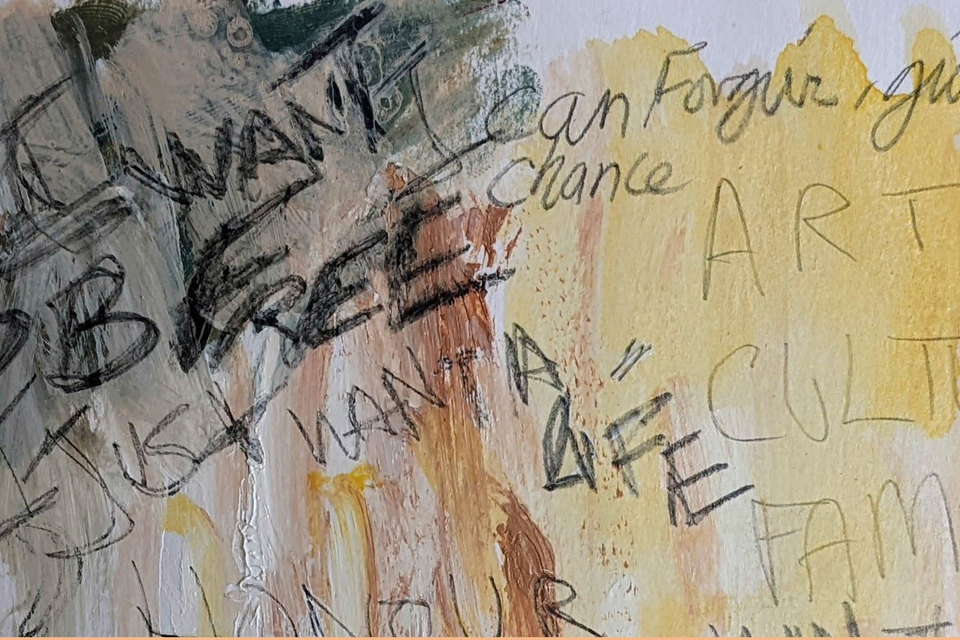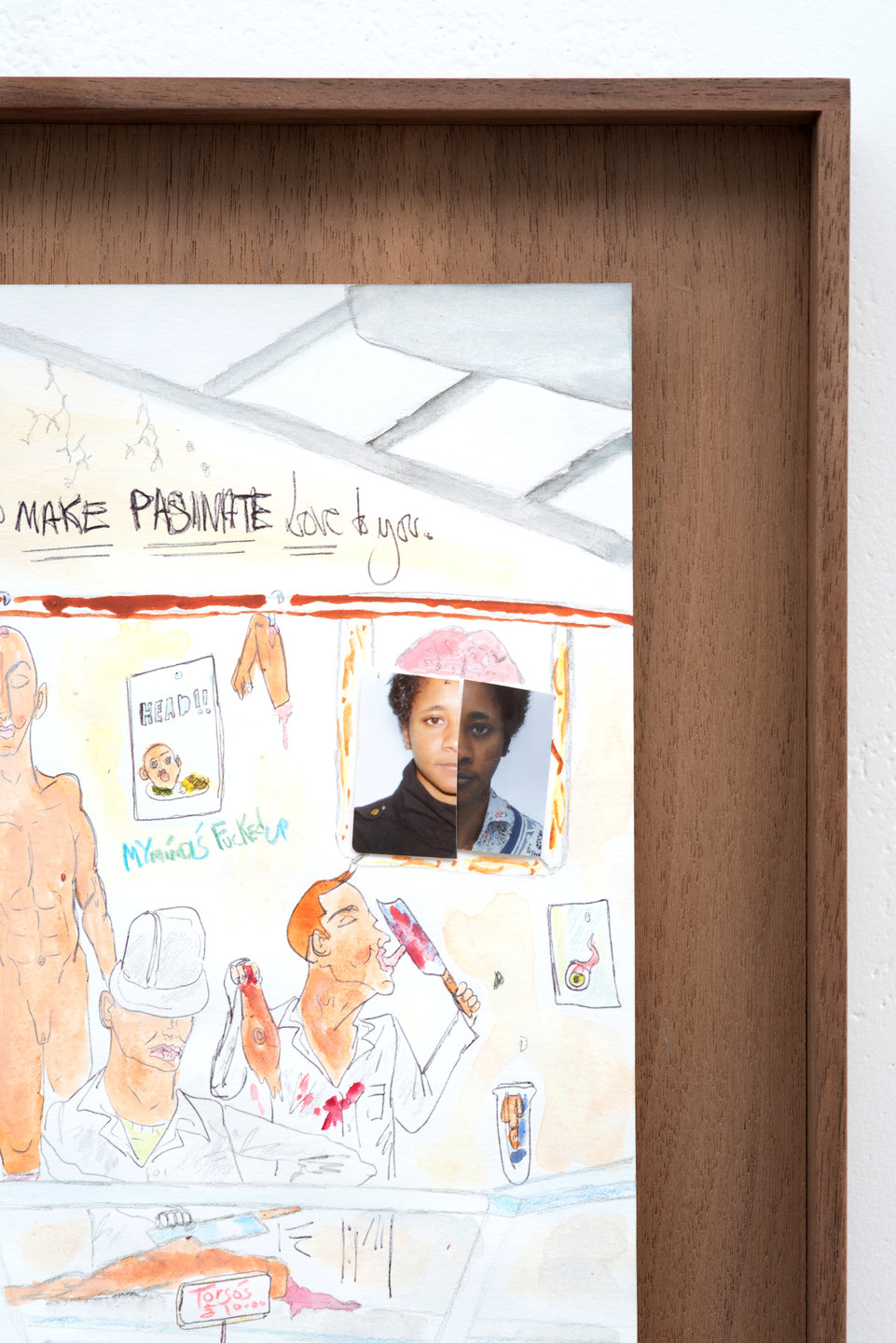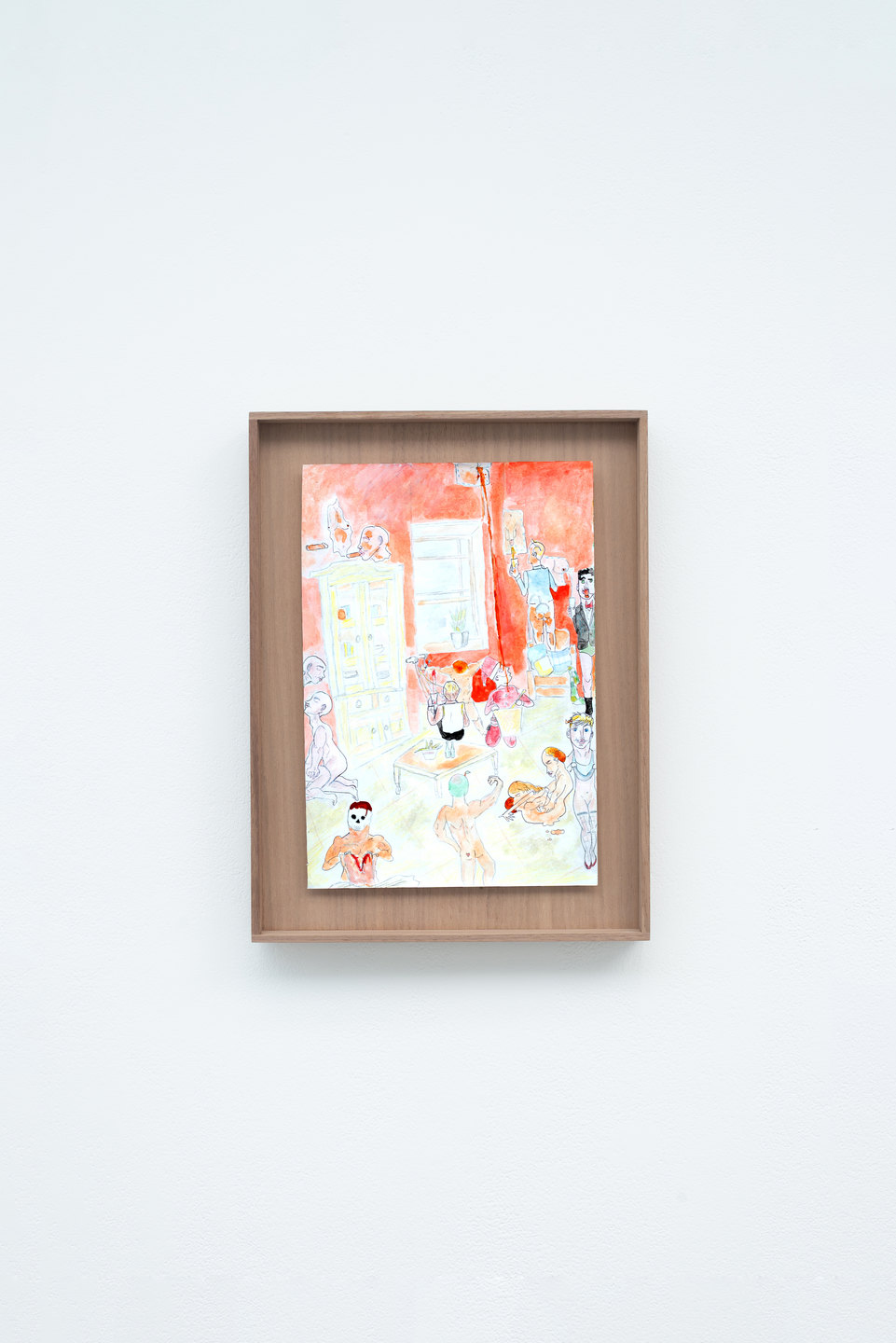
Opening Friday 8th July 6-9pm
8th July – 14th August 2022
Open 12-6pm Thursday-Sunday
Cell Project Space presents the first solo exhibition by British artist Nicola Frimpong. The exhibition stages a cross-section of the artist’s work spanning from 2012 until the present day; a relentless body of paintings executed entirely on A4 paper and primarily produced in gouache, ink and watercolour the exhibition sets out to revisit narratives in her work generated over the past decade that have become increasingly urgent. With Frimpong’s keen observation and cutting caricature, what emerges from these exhaustive and multilayered paintings is a responsive voice that navigates her neurodiversity, gender and race amidst experiences of a stifling cultural and class oppression.
Frimpong works at home, and mostly in private, which serves as both her sanctuary and her studio, generating drawings and paintings entirely from a dining room table. Using whatever is available in her kitchen cupboards which includes biro, bleach, Tippex, and brewed black tea, multiple narratives are interwoven through text and figuration, sometimes expressed through ‘Freakpong’, the artist’s alter ego. In her auto-fictional works, bodies intertwine with scrawlings of handwritten declarations of rage, tenderness and humour.
Intimate in scale, where informality and intensity can sit comfortably together, the paintings echo the form of a personal diary. This documents a vast and raging universe that plays out Frimpong’s psychological relationship with the politics, history and aesthetics of societal structures, whilst confronting oppressive forces of racial and ableist objectification. The artist creates dizzyingly elaborate and often playful encrypted schemes, drawn from the colonial mishmash of British history, pop and institutional culture; informed by contexts as diverse as ancient Egypt to eighteenth-century pornography, Baroque painting, gay porn, slasher horror movies, Georgian architecture, queer bars, courtrooms, sex clubs, Jacobean gallows, house, bear and swingers parties to the workings of abattoirs and hospital surgery rooms and her own suburban living room.
Frimpong’s vision and imagination orbit around depictions of suppressed desires, intersecting grotesque and brutal revisionist fantasies, by turning the table on racial and gender hierarchies, and exposing all its irrational chaos, often with surrealist effect. For Frimpong, the body is an instrument. Highly sexualized acts and dismembered bodies with scratched out faces are riddled with detail, where no one part is more significant than the other. All the players in society are here; surgeons, auctioneers, traders, judges, butchers, sex workers, lovers, subjected to abuse or become abuser. Delicately painted as watery, candy-coloured characters, they appear simultaneously pathetic and ecstatic, teetering somewhere between helplessness and malevolence where pleasure, pain and indifference sit next to one another without clear distinction, but given equal attention. The level of saturation and comic book detail in her drawing defies the demand to absorb the work in full grasp, as all manner of accelerated nightmares, perversions, scatological and libidinous excesses are played out in the artist’s playground of hell. Her orgiastic worlds of brown and pink bodies willfully undermine normative constructions of self and other.
Frimpong’s text-based works are an important and generative part of her practice, the artist describing them as “psychological diarrhoea just waiting to shit out”. In contrast to the figurative works, they display the familiar tropes of twentieth century canonic expressionist painters. The mark-making is abstract, automatic, frenetic and gestural, often worked with speed and without predetermined thought. It is here that words reveal a fragile obsession with the medium as well as a frustration with an inability to fall in line with expectations of patriarchal painting traditions.
As an intuitive artist, Frimpong blends painting and drawing to share diaristic impulses, and personal confessions, to make public her perspective on societal constructs and what she sees as her refusal to socially conform.
In 2014 Nicola Frimpong was interviewed as part of the film survey ‘African Diaspora Artists in the 21st Century', directed by curator and academic Paul Goodwin, a collaboration between King’s College London’s Department of International Development and the Institute of International Visual Arts (Iniva). She was selected for ‘Bloomberg New Contemporaries’ Institute of Contemporary Art, London and Liverpool Biennial, Liverpool in 2012-2013, after graduating in 2009 from MFA Wimbledon School of Art and included in ‘No Soul For Sale’ in The Museum of Everything, Tate Modern, London 2010. Selected works can be found in the Henry Boxer collection and the artist is featured in ‘Stick to the Skin: African American and Black British Art’, 1965-2015 by writer, Celeste-Marie Bernier, published by University of California Press in 2019 and included in ‘Paper’, exhibition and catalogue for Saatchi Gallery, London in 2012, writer Ben Street.





































